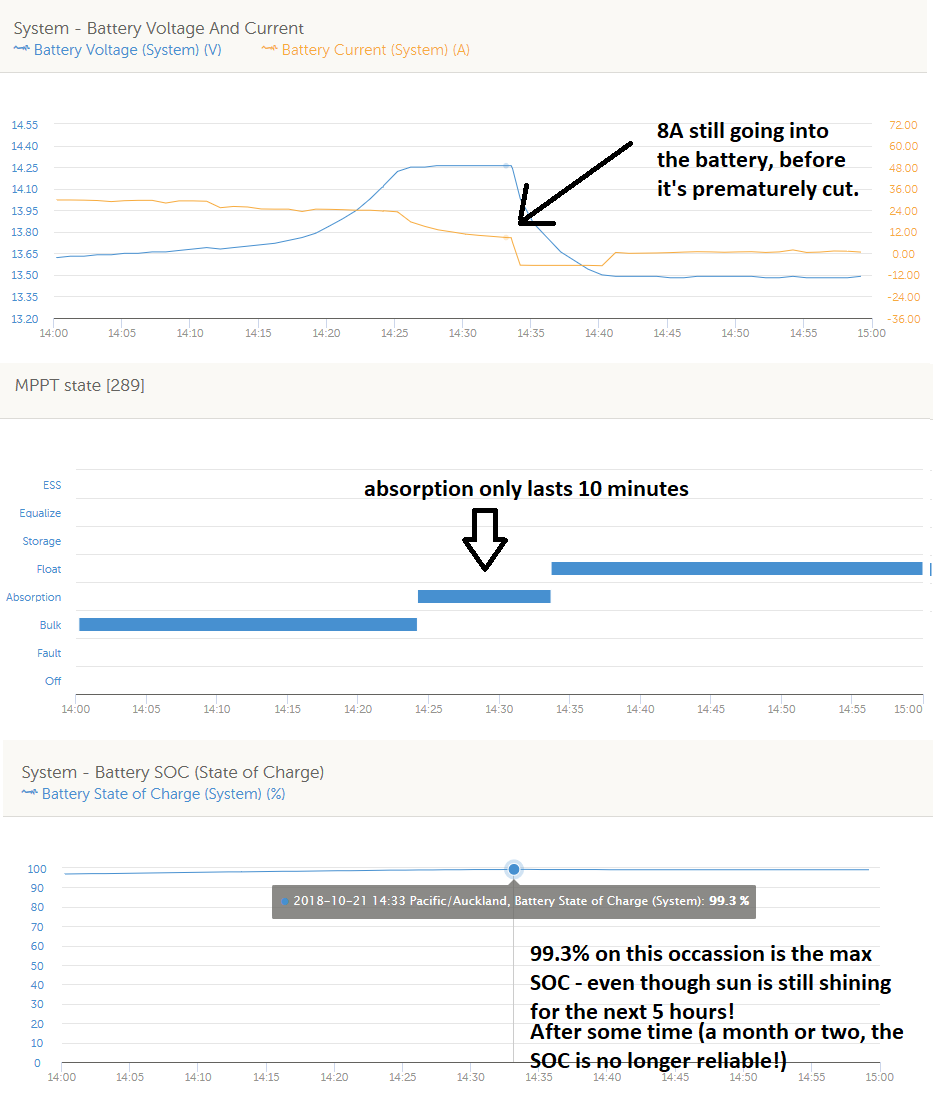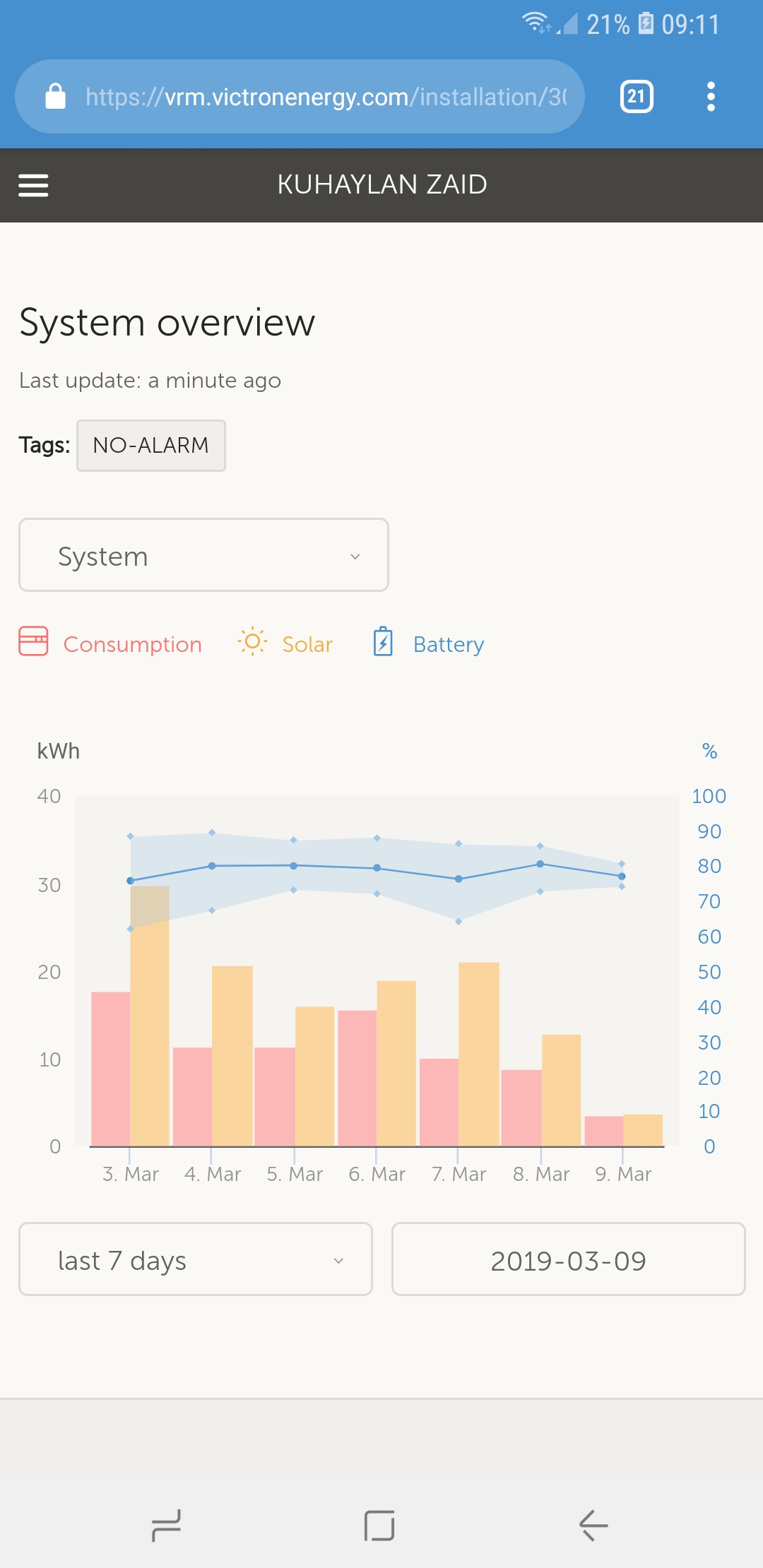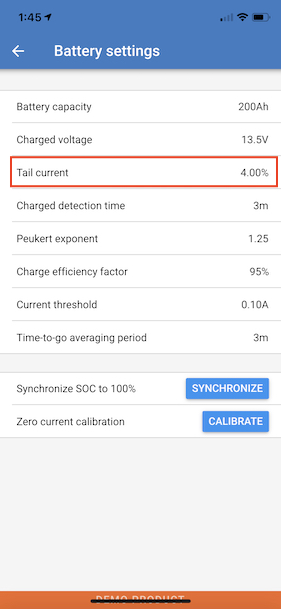I'm having trouble automatically syncing the BMV with Blue Solar MPPT. In the MPPT manual it says:: "Additionally, the absorption period is also ended when the charge current decreases to less than 2A".
This design is not ideal with LiFePO4 batteries, and also if you have more than one MPPT charging the same battery bank.
In my case that's 3xMPPTs, thus I still have 6A "tail current" when the absorption ends, and due to that the BMV will usually not auto-sync.
Is there anyway this 2A limit can be made optional in the MPPT firmware, so it behaves just like a MultiPlus absorption with no minimum limits?




